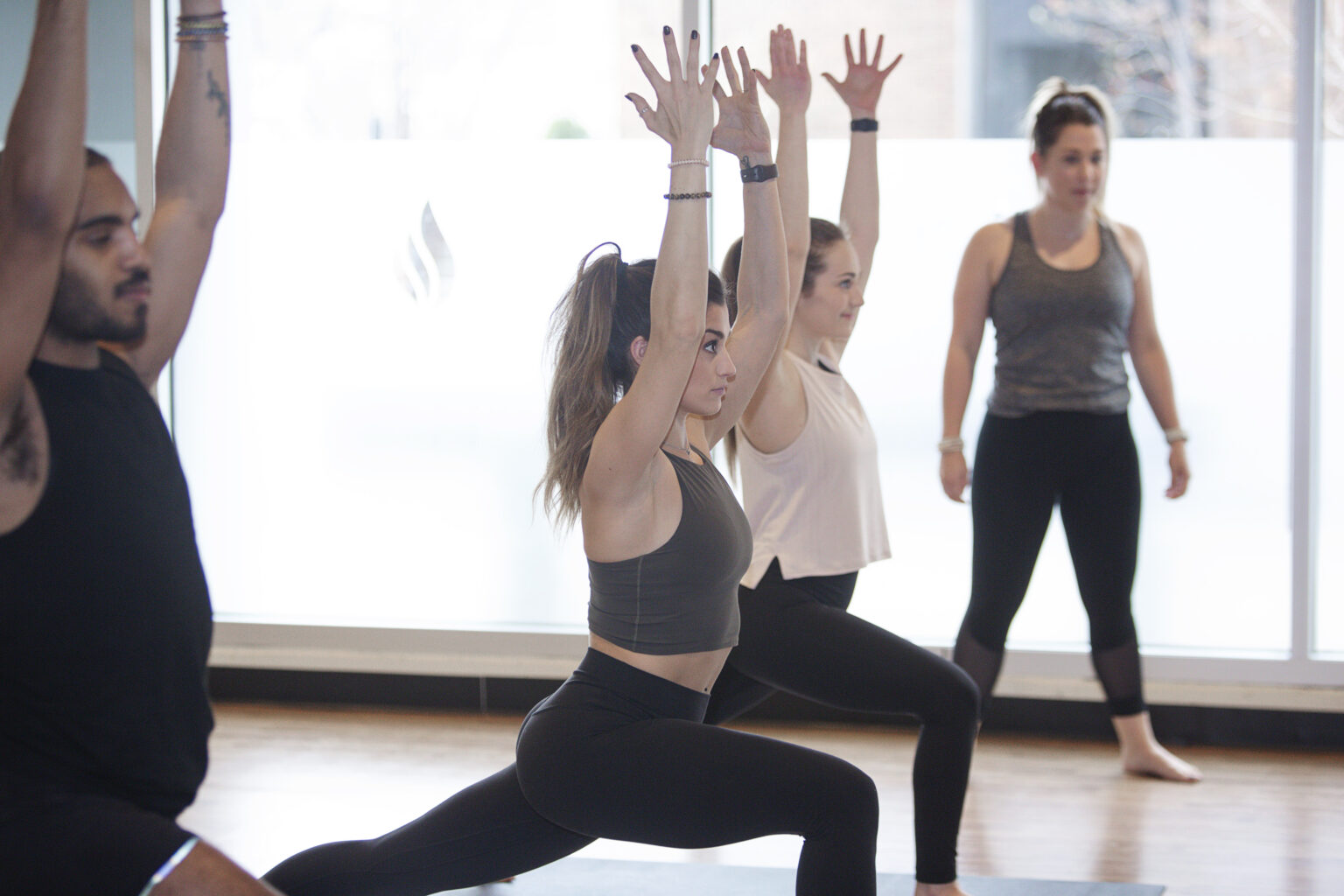

“The purpose of Yoga is the attainment of happiness, peace, and bliss. The meaning of Yoga is the union of individual consciousness with Shiva consciousness, with God. Yoga is the meeting of the drop and the ocean. The ultimate result of all Yoga is purity of mind and body.”
– Swami Kripalu
Yoga, from the Sanskrit root “yuj”, is often translated into the word “union”. The practices of Yoga seek to develop a heightened level of consciousness and awareness so that the practitioner may grow in their capacity for compassion, healing, and wisdom of True Self. In short, Yoga is a science of self-awareness that seeks the realization and experiential knowledge of one’s humanity merged with their Divinity.
A well-rounded practice of Yoga requires an understanding of the underlying philosophies and principles surrounding the tradition. Originally, the practice of Yoga was passed on to only the worthy seekers as part of an oral tradition – teacher and student working together to preserve and practice the sacred teachings.
Often in this practice, practitioners may have experiences that are difficult to describe – experiences that are not part of the normal waking consciousness – i.e., feeling a wave of emotion within the mind, or a rise of energies within body. Ancient yogis would also have similar experiences and sought to understand these internal processes. These yogis created models, based on the philosophies of the day, and passed them down to their students. The models were then embellished and expanded, and sometimes, merged with other models – continuing to adapt to the societal shifts. These models give the intangible experience a tangible form and offers a firm foundation and road map as one traverses through the process of Yoga. One such navigational tool that emerged from the Vedanta and Upanishadic Non-dual teachings is the Four Branches of Yoga.
First systematically described in the Bhagavad Gita, Karma Yoga is the practice of selfless service that is predominately action oriented. Karma yogis practice skillful action not for personal gain but to uplift the lives of whom they serve. This is the yoga of an active life – as opposed to a life of renunciation. Action is performed in the spirit of sacrifice (yajna) and the renunciation then falls upon the fruits of action so that no karmic bonds are created. The aim is to seek the Divinity in all and to develop non-attachment to any potential outcomes or results associated with one’s duties and responsibilities.
In the Bhagavad Gita, Krishna describes the path of Raja Yoga as one of “meditation” or “discipline.” Raja or “Royal” Yoga is a systematic path to self-realization which would later be refined and articulated by Sri Patanjali and the Yoga Sutras. Through the weaving together of thoughts and observed truths in a sequence that offers insight into one’s spiritual practice – a road map is revealed. The illuminated path is a progression through the stages of meditation to arrive at samadhi or union – creating the journey from the self to the Self.
“Nothing in the world can purify as powerfully as wisdom; practiced in yoga, you will find this wisdom within yourself.”
– Bhagavad Gita 4.38, translation by Stephen Mitchell
Knowledge and wisdom are gained with the study of scripture and the observation of the Self. The Jnana yogi uses the experiences of practices and the knowledge gained through self-study to seek the wisdom that lies hidden beyond the mind and in the depths of the soul – the unity of humanity with Divinity.
“By devotion he comes to realize the meaning of my infinite vastness; when he knows who I truly am, he instantly enters my being.”
– Bhagavad Gita 18.55, translation by Stephen Mitchell
Through the lens of Bhakti Yoga, the Divine can only be known through the power of love and devotion. The knowledge of Divinity emerges from the awakening, opening, and experience of the heart and energy within. The heart-centered practices often include chanting the various names of God, prayer, and repetition of mantra – a word or phrase that focuses and ultimately, transcends the mind.
While these four branches may be studied and experienced individually – one might find that through the cultivation of qualities from each branch a greater depth of insight of True Nature is gained. As a practitioner continues to explore and grow, they may also find that they are drawn to one branch versus another based upon the point in which they find themselves within their practice or stage of life.
So, how does Hatha Yoga fit into the workings of the Four Branches of Yoga? Hatha Yoga began to emerge around 11th century and could be viewed as a progression of the Four Branches with the addition of other teachings of the day including Patanjali’s Eight-Limbed Path and Tantra Yoga. Hatha Yoga, while being primarily physical in nature, utilizes all the branches – action (karma) though mindful movement and breath practices; meditation and discipline (raja) through movement, breath, and meditation techniques; wisdom (jnana) through the awakening of the Witness Consciousness and the ability to rest in the space of True Nature; and devotion and reverence (bhakti) to the Higher Self.
Hatha Yoga is a practice of physical well-being in which many Western students begin their exploration into this ancient science. Hatha Yoga uses the physical body as a “spiritual doorway” to unleash the potential of innate healing and inner knowing one’s True Nature. When yoga asana (posture) is performed mindfully, one may experience greater concentration, profound stillness, and connection to Source. With the addition of the foundational hatha yoga practices of pranayama (breath control), and mudra (contraction in the body that pulls the mind inward), one can not only rejuvenate and re-balance the physical body but also dissolve the layers of identity within the mental body to become fully absorbed in Spirit. Hatha Yoga aims to create awareness and unity of body, mind, and Spirit – as the goal of the practice is not to escape the body or mind but see them as expressions of Divine energy.
2025 Power Life, All Rights Reserved.
Built with 🤍 by Blink
2025 Power Life, All Rights Reserved.
Built with 🤍 by Blink Wellness
Parking available in the Scheels Parking Lot.
"*" indicates required fields
Kirk was working 80-hour weeks and wearing his shoulders as earrings when he found yoga in 2005. Forever the competitive athlete, he loved the physicality of yoga. When the spiritual and philosophical side of yoga were exposed to him, Kirk was hooked. Yoga provided him with what other activities couldn’t -- the ability to foster the benefits of practice both on and off of the mat. Yoga was something that Kirk could bring into all aspects of his life.
Kirk knows that yoga can be intimidating, so he crafts a class that is playful and inviting, while still being challenging and safe. His creatively planned classes build strength and flexibility in your body and mind while establishing clarity, giving you more confidence to overcome obstacles in your life, and keeping you injury-free. His classes are themed with a message that is relatable and will inspire you to take it with you off your mat. Kirk has been teaching yoga since 2008 and lead his first teacher training in 2012. Where Kirk truly shines is in coaching, developing and bringing out the best in others.
Kirk enjoys traveling (40+ countries to date!), snowboarding, and cherishes time with his wife and two daughters.
Christen Bakken’s yoga journey began in 1998 in a Bikram studio that provided a safe and secure place to practice. She saw the yoga mat as a place to remember her purpose and a place to play. As she continued her studies and began her journey to teaching in 2006, Christen infused yoga classes with devotion and the yoga mat became a place of personal transformation and healing. Her classes are filled with laughter, song, sweat, and usually heart openers. In 2013, Christen began training yoga teachers. This is the place where she finds the most joy - in community with folks looking to grow and be of greater service in their homes, on their mats, and in the world. Over the years, she has led trainings in Denver, the Midwest, Florida, and now abroad. She has trained in continuing education modules, 200-hour, 300-hour, and 500-hour programs. Beyond the mat, Christen is a passionate adventure seeker - she loves to bike, snowboard, and spend time with her husband and pups. She sees each day as a blessing and hopes to remind all who interact with her of this truth.
We validate parking for THREE garages in the area!
Two Light garage located directly north of the studio. Please bring your ticket inside for validation.
Three Light garage at Main and Truman. Garage entrance on Truman. Please bring your ticket inside for a validation sticker.
Power & Light garage at 13th and Grand. Please ask for a parking pass at the studio front desk. (Hot tip: the Power & Light garage has a ton of space! But be sure to give yourself a little extra time to walk to the studio.)
If you find that you are running a couple minutes late due to parking, please call the studio to let the instructor know to wait for you before locking the doors.
There is a garage on 38th and Harney which offers 2 hours FREE parking. Lot full? We have also partnered with our friends at Greenslate to provide 1 hour and 15 minute validated parking for Power Life students in the lot at 36th and Harney (just south of the Cottonwood Hotel). Read below to learn how to take advantage of this perk:
***Please do NOT park at Crescent Moon − you will be towed!***
There is a paved lot and gravel lot on the West side of the building.
Meters on Court and 4th (by Peace Tree) for $0.25/hour, 9am-9pm Mon. – Sat. 12-hour max*
Meters on 4th (to the North) for $1.25/hour. Mon – Sat. 4-hour max.
All meters are free on Sundays and major holidays.
*Starting July 8, 4th Street will temporarily become a one-way. Students will only be able to enter our parking lot from the North via Court Ave. and exit it going south. Thank you for understanding!